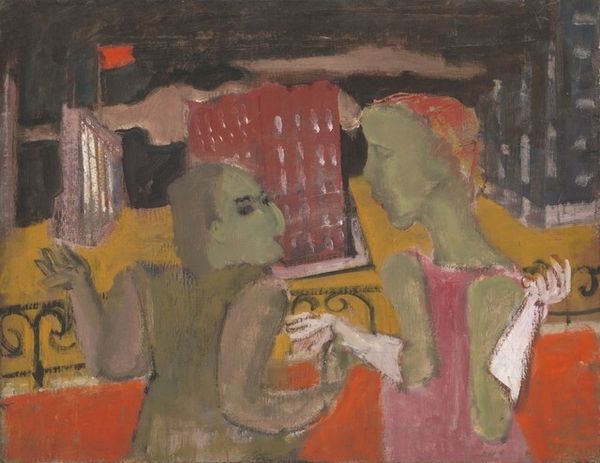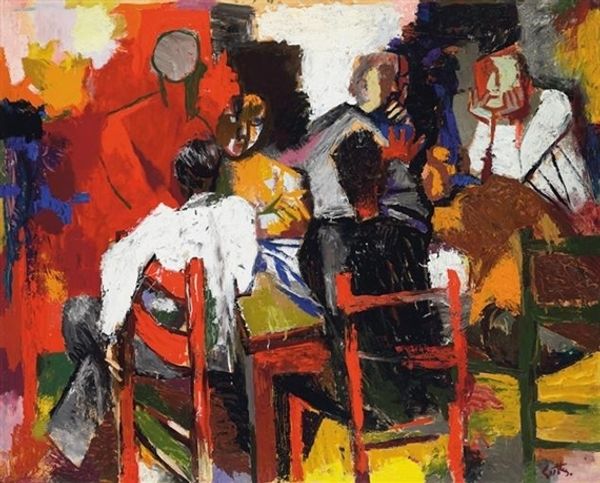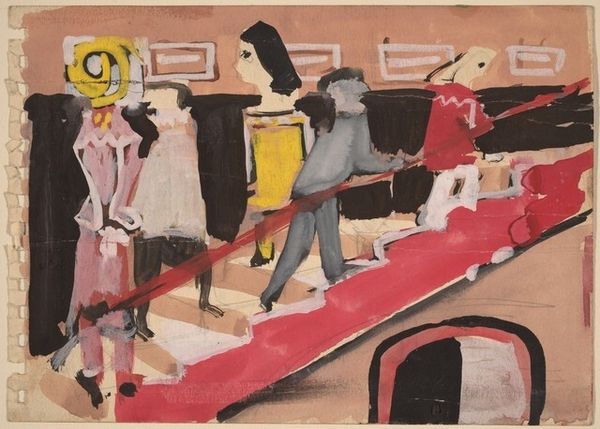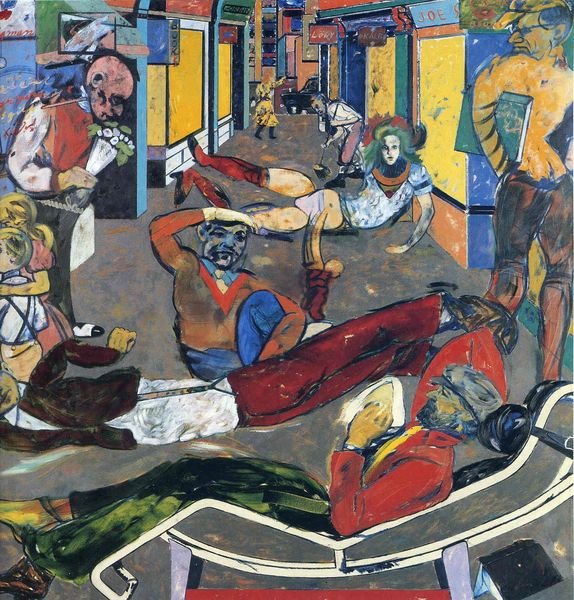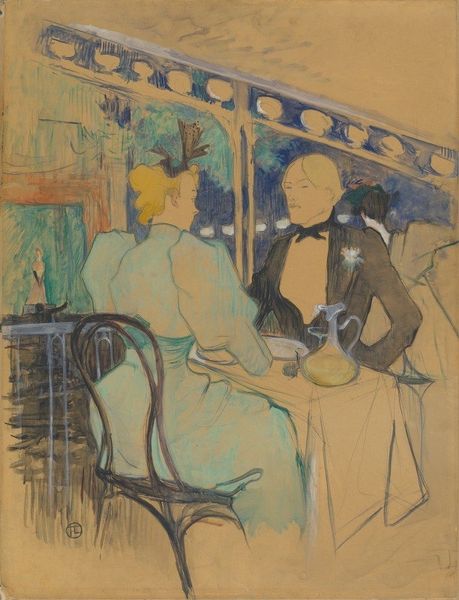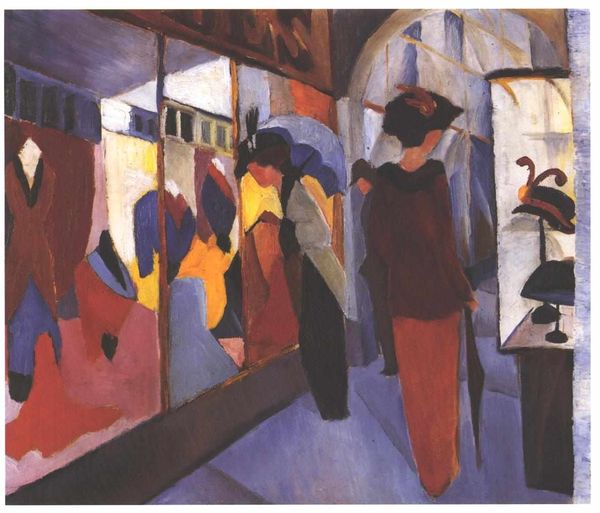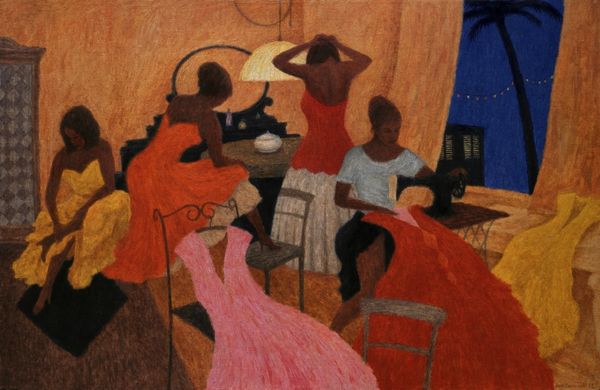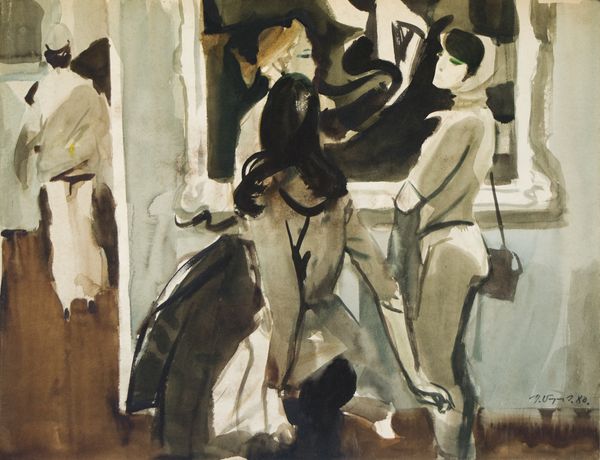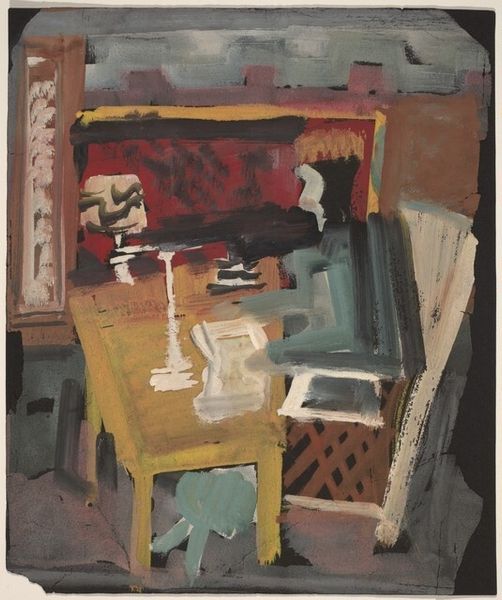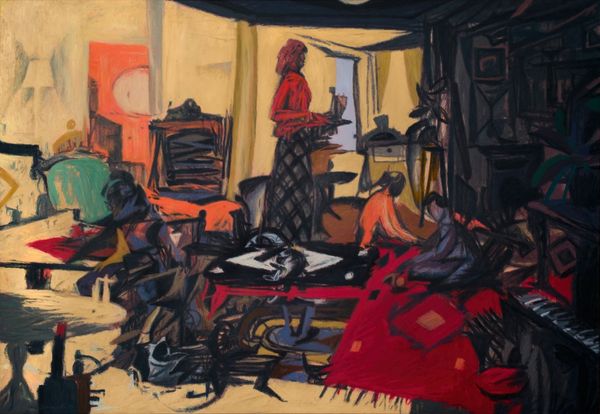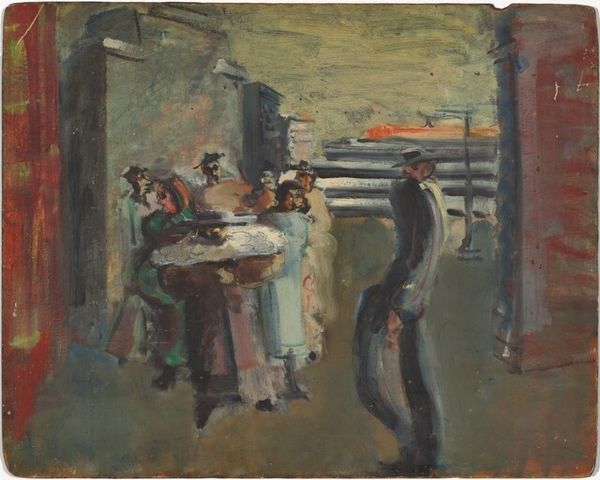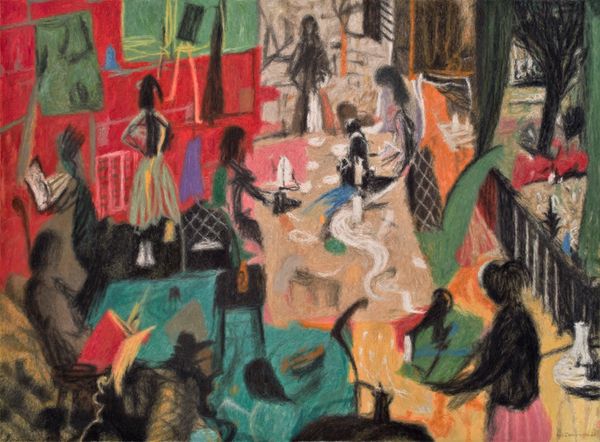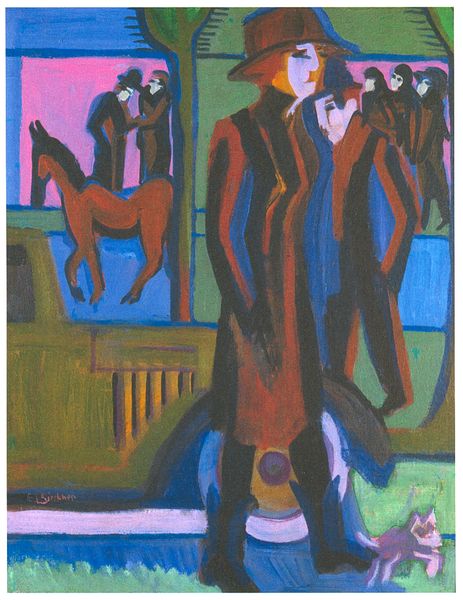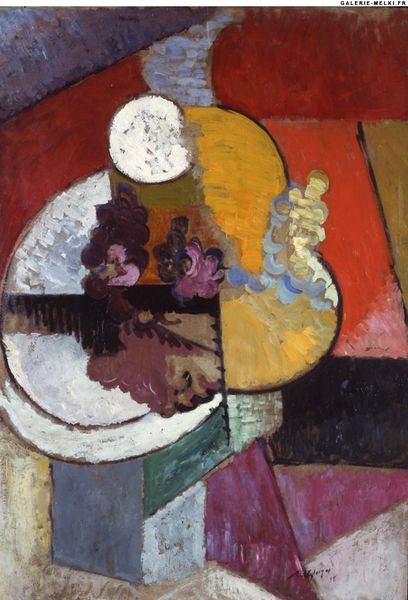
tempera, painting
#
tempera
#
painting
#
figuration
#
genre-painting
#
modernism
Dimensions: overall: 60 x 80.6 cm (23 5/8 x 31 3/4 in.)
Copyright: National Gallery of Art: CC0 1.0
Curator: Oh, hello! I'm just captivated by this painting. It's Mark Rothko's "The Party," created back in 1938, using tempera on, well, something. It’s got such a wonderfully awkward charm, doesn’t it? Editor: It's intriguing, certainly. The initial impact is…unsettling. There's a strange tension between the implied conviviality of a "party" and the rather isolated, almost confrontational stance of these figures. It reminds me of the early modernist tendency to destabilize comfortable bourgeois themes. Curator: Unsettling! Yes! Exactly. It feels like someone crashed a very stiff gathering, doesn’t it? Rothko's use of these somewhat garish, blocky colours… they almost vibrate, fighting for attention. And look at the expressions – or lack thereof. Editor: Precisely. Note the absence of true interaction. These are bodies occupying a shared space, but are they communicating? The stark flattening of the figures, combined with that cramped interior, speaks volumes about alienation within social structures. The role of the piano also feels loaded… perhaps as an embodiment of class privilege? Curator: The piano, absolutely! A symbol of refined entertainment, here rendered almost monstrous in its solidity. It's as though Rothko’s taken something traditionally associated with leisure and culture and imbued it with this feeling of weight and discomfort. You know, Rothko wasn't fully abstract at this stage. There are glimpses of figurative painting here, which actually make the eventual transition all the more potent, somehow. Editor: It makes one consider the journey Rothko underwent in response to socio-political upheaval. "The Party", completed on the eve of the Second World War, acts as a poignant precursor to the sublime emptiness of his later colour field paintings. It's a rejection of conventional form but also, arguably, a rejection of the traditional expectations tied to representation. The artist, it would appear, is no longer concerned with passively reflecting the world but confronting the very fabric of human existence. Curator: Gosh, yes. Looking at this, it is almost as if one can sense Rothko preparing himself to abandon the tangible world completely for the vast and emotionally bare canvases that defined him. There's a restless quality, like a prelude, here. The party hasn’t even begun, yet something important is clearly over. Editor: And that tension, I believe, remains powerfully resonant. "The Party" refuses easy answers. Instead, it compels us to ask: What are the unacknowledged anxieties simmering beneath the surface of our social gatherings? Curator: Exactly! So much of modern life laid bare! You know I'm never going to look at a cheese and wine night in the same way again!
Comments
No comments
Be the first to comment and join the conversation on the ultimate creative platform.
